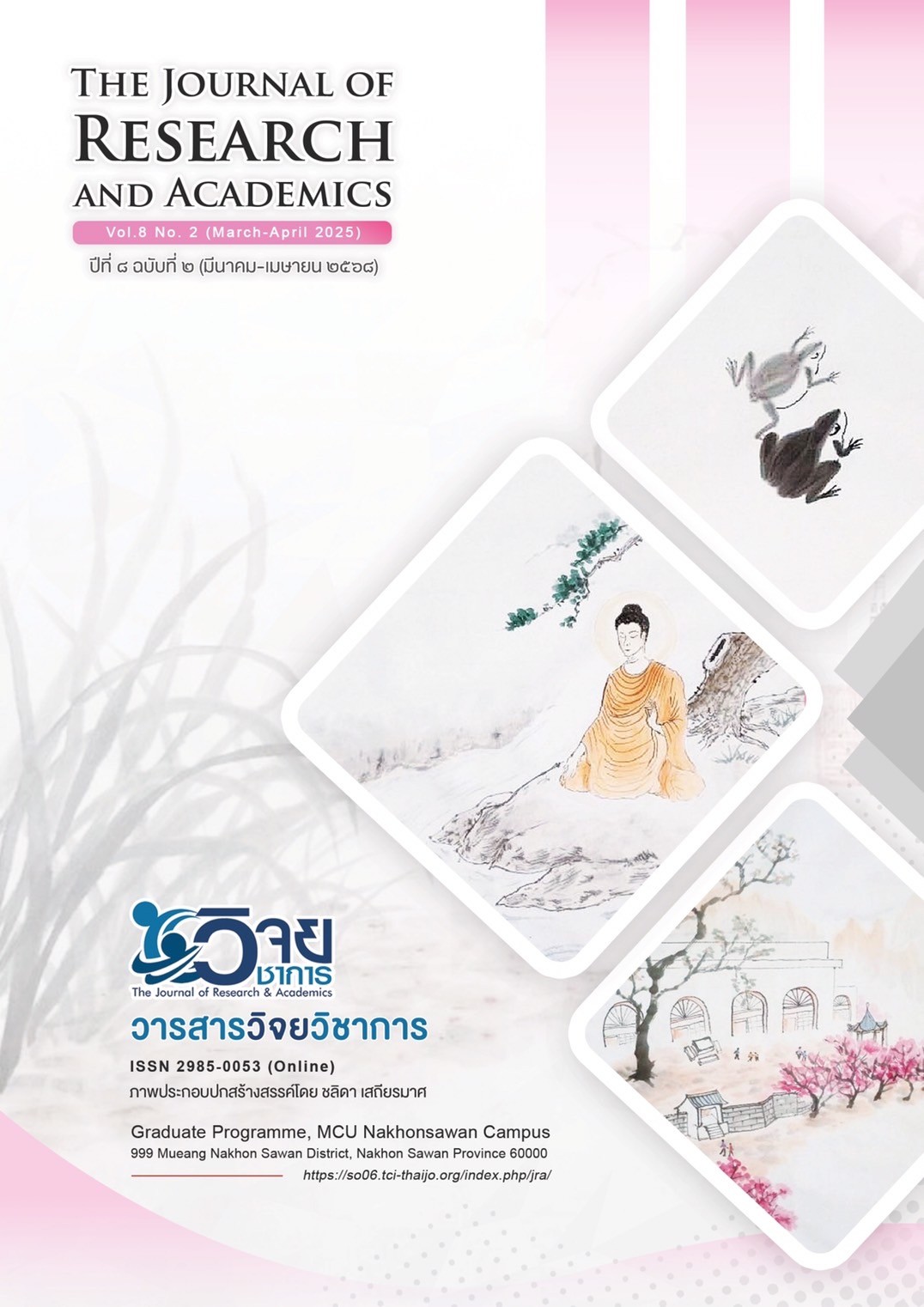Development of Public Welfare Work with Herbal Medicines of Thai Monks
Main Article Content
Abstract
The objectives of this research article were 1) to study the status of public welfare work using herbal medicines of Thai monks; 2) to develop public welfare work using herbal medicines of Thai monks; and 3) to present the development of public welfare work using herbal medicines of Thai monks. This was a qualitative research, field research. The key informants used in the research were in-depth interviews, totaling 19 people, and focus group discussions, totaling 9 persons. The statistics used for data analysis were descriptive content analysis. The research results found that 1) public welfare work in Buddhism had many stories related to welfare and community development, both in the form of stories, teachings, and records of events that occurred. These stories showed that Buddhism supported the involvement and roles of monks in society and honors actions that were for the benefit of the public; 2) the public welfare work of the Thai Sangha was the provision of various forms of welfare to the people who supported the temple, the temple’s donors and female donors, or the general public. The temple was a part of society. The temple depended on the house and the house depended on the temple. The temple was the center of society. The monks were the people’s spiritual refuge. When the people were in trouble with something, it was the temple’s duty to provide assistance; and 3) the development of public welfare work using herbal medicines by Thai monks in terms of the treating physician, the physician must have a good knowledge of medicines and be able to use the medicines correctly, appropriately, and in the right way for the patient. In terms of the mind, the principles of Vipassana must be applied to the patient to elevate the mind to wisdom and peace. In the aspect of the place, the nurse’s room must be arranged and the waste treatment system in the temple must be systematic to prevent pollution and provide convenience to the patients.
Article Details

This work is licensed under a Creative Commons Attribution-NonCommercial-NoDerivatives 4.0 International License.
1. เนื้อหาและข้อมูลในบทความที่ลงพิมพ์กับวารสารวิจยวิชาการ ถือเป็นข้อคิดเห็น และความรับผิดชอบของผู้เขียนบทความโดยตรงซึ่งกองบรรณาธิการวารสารไม่จำเป็นต้องเห็นด้วย หรือร่วมรับผิดชอบใด ๆ
2. บทความ ข้อมูล เนื้อหา รูปภาพ ฯลฯ ที่ได้รับการตีพิมพ์ในวารสารวิจยวิชาการ ถือเป็นลิขสิทธิ์ของวารสารวิจยวิชาการ หากบุคคลหรือหน่วยงานใดต้องการนำทั้งหมดหรือส่วนหนึ่ง ส่วนใดไปเผยแพร่ต่อหรือเพื่อการกระทำการใด ๆ จะต้องได้รับอนุญาตเป็นลายลักษณ์อักษรจากวารสารวิจยวิชาการก่อนเท่านั้น
References
ประทุม อังกูรโรหิต. (2553). สถาบันทางพระพุทธศาสนากับงานสังคมสงเคราะห์. วารสารพุทธศาสน์ศึกษา จุฬาลงกรณ์มหาวิทยาลัย, 18(3), 31-68.
พระมหาจรรยา สุทฺธิญาโณ. (2543). พระพุทธศาสนากับการดูแลรักษาสุขภาพแบบองค์รวม. นนทบุรี : ประชาธรรม.
พิสันต์ สุขพูล. (2566). วิเคราะห์การเสริมสร้างสุขภาวะเชิงพุทธตามหลักการแพทย์แผนไทย. (ดุษฎีนิพนธ์พุทธศาสตรดุษฎีบัณฑิต สาขาวิชาพระพุทธศาสนา). บัณฑิตวิทยาลัย : มหาวิทยาลัยมหาจุฬาลงกรณราชวิทยาลัย.
พุทธทาสภิกขุ. (2512). พระบรมธรรม. กรุงเทพฯ : ห้างหุ้นส่วนจำกัดการพิมพ์.
มหาวิทยาลัยมหาจุฬาลงกรณราชวิทยาลัย. (2539). พระไตรปิฎกภาษาไทยฉบับมหาจุฬาลงกรณราชวิทยาลัย. กรุงเทพฯ : โรงพิมพ์มหาจุฬาลงกรณราชวิทยาลัย.
มหาเถรสมาคม. (2560). มติเห็นชอบแต่งตั้งคณะกรรมการประสานงานแผนยุทธศาสตร์ในการปฏิรูปกิจการพระพุทธศาสนา (คปพ.). (อัดสำเนา)

